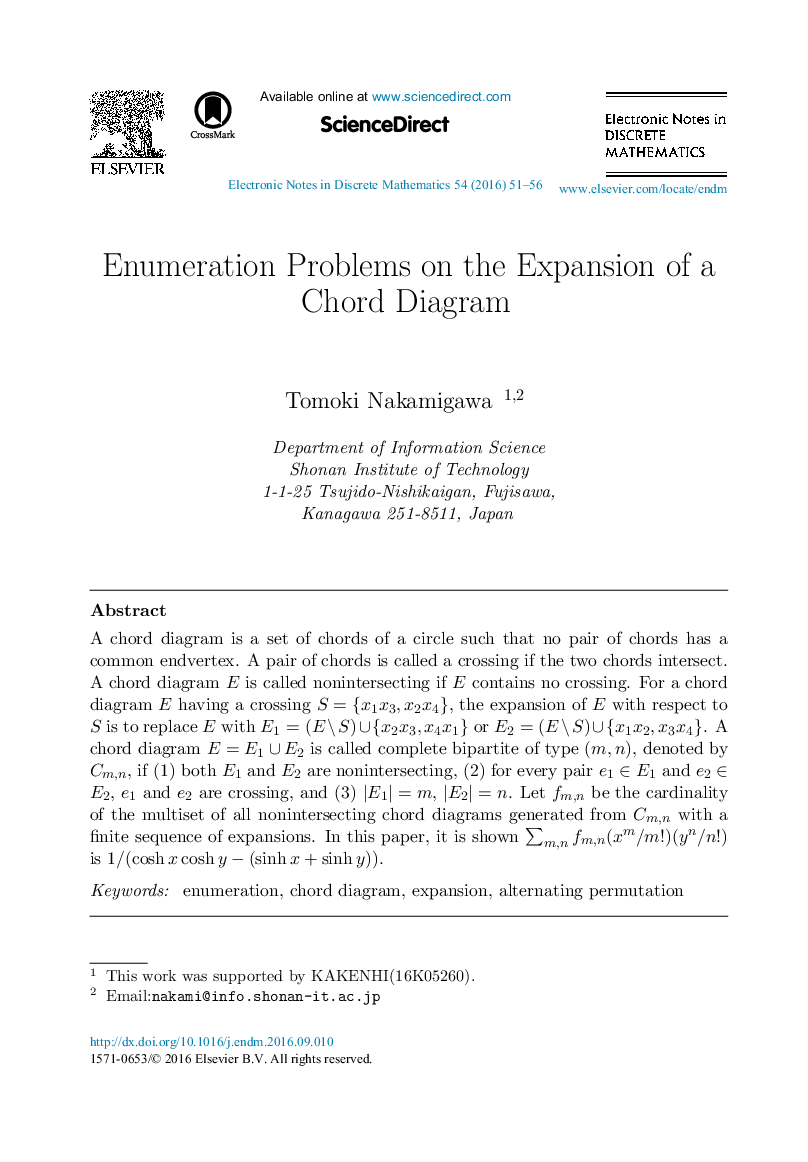| Article ID | Journal | Published Year | Pages | File Type |
|---|---|---|---|---|
| 6423641 | Electronic Notes in Discrete Mathematics | 2016 | 6 Pages |
A chord diagram is a set of chords of a circle such that no pair of chords has a common endvertex. A pair of chords is called a crossing if the two chords intersect. A chord diagram E is called nonintersecting if E contains no crossing. For a chord diagram E having a crossing S={x1x3,x2x4}, the expansion of E with respect to S is to replace E with E1=(E\S)âª{x2x3,x4x1} or E2=(E\S)âª{x1x2,x3x4} chord diagram E=E1âªE2 is called complete bipartite of type (m, n), denoted by Cm,n, if (1) both E1 and E2 are nonintersecting, (2) for every pair e1âE1 and e2âE2,e1 and e2 are crossing, and (3) |E1|=m, |E2|=n. Let fm,n be the cardinality of the multiset of all nonintersecting chord diagrams generated from Cm,n with a finite sequence of expansions. In this paper, it is shown âm,nfm,n(xm/m!)(yn/n!) is 1/(coshxcoshyâ(sinhx+sinhy)).
